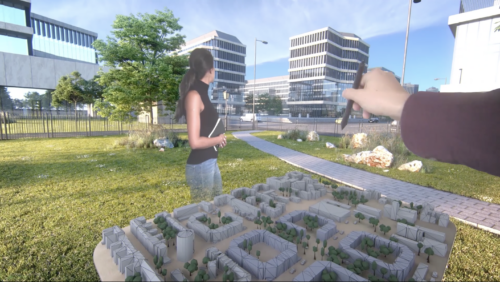Gen Alpha Is Building a New Future. Are We Ready for It?

Imagine you’ve been talking to Siri as long as you’ve known how to speak.
Imagine you’ve never had to do homework without the help of ChatGPT.
Imagine you’re as comfortable playing the guitar in a friend’s garage as attending a live concert with them in Fortnite.
This is the reality of Gen Alpha, our youngest generation. It’s a generation that has never known a world without generative AI, augmented reality, or widespread gaming — a group equally at home in virtual environments as physical ones. It’s also a generation whose resilience, technological skills, and love of world-building are leading us towards an incredible new future for work, play, fashion, and society.
Who is Gen Alpha?
Born between 2010 and 2024, Generation Alpha is the youngest generation. The oldest of them aren’t in high school yet, but their cohort is already 46 million strong in the US. The children of millennials, they’re the first generation to be born entirely in the 21st century. They are more racially and ethnically diverse than any previous generation, and it’s estimated that more than 2.8 million members are being born globally each week.
We don’t want to over-generalize about a generation whose identity is still emerging. But as the mom of Gen Alpha kids, I’ve observed that it is a highly intelligent, creative, and tech-savvy cohort. They are outspoken kids, willing to voice their concerns and make their impact felt. And they’re extremely proficient with technology, enjoying virtual fashion and gaming as much as sports and music.
We know that this generation will face staggering challenges. The growing impacts of climate change will be felt by Gen Alpha more than any previous generation. They will have to contend with massive social and geopolitical shifts, widespread mental and environmental health crises, and ongoing struggles for equality.
But they will also enjoy stunning new opportunities. Some of them will be tourists in space. The majority — 65%, according to McCrindle Research — will work in jobs that don’t even exist yet. With advancements in healthcare, they’ll enjoy a longer life expectancy, and with remarkable technological progress, they’ll see everything from smart cities to widespread self-driving cars.
Finally, Gen Alpha will have to show impressive resilience. They were young children during the pandemic, and that has been incredibly difficult. But if we look at the amount of innovation that followed in the generation after the 1918 Spanish flu pandemic, there’s reason for hope. Gen Alpha has already faced major setbacks, and yet they are responding with heightened creativity, resilience, and eagerness to build.

The most tech-savvy generation
Millennials had the personal computer, spearheading internet use and technology adoption when they were young. Gen Z was raised with smartphones and social media, with a world of knowledge perpetually at their fingertips.
Gen Alpha, meanwhile, has been growing up with next-gen technologies like AI and AR. In their new briefing paper of original qualitative research, The Business Case for Understanding Generation Alpha, The Harvard Business Review Analytic Services describes Gen Alpha as “the first generation to be raised in an entirely digital world and… the most technologically adept cohort yet.”
This digital world translates to a demographic that loves designing avatars, decorating virtual realms, and spending virtual currencies. While spatial computing technologies might feel strange to other generations, Gen Alpha can flow comfortably from their virtual selves to their physical selves and will shape the future of this sector. They have quickly become active participants in the immersive worlds they inhabit, and they will continue to gain influence in them as these spaces develop.
Gen Alpha also has a love of gaming and world-building that surpasses anything we’ve seen before. They still use social media, but their conversations with friends are increasingly taking place in the metaverse, with WhatsApp groups, Discord servers, and Roblox DMs replacing platforms like Instagram and Snapchat.
Still, not one single technology or platform defines Gen Alpha. Instead, their overall tech-savviness and their comfort with new technologies — especially AR and immersive technologies — set them apart from their predecessors. I think about a recent visit to our dentist, where my children intuitively began playing a virtual soccer game with AR projection mapping on the waiting room floor. This age group instinctively knows how to use new tools and technologies in a way we’ve never seen before.
Gen Alpha’s greatest strengths: creation and collaboration
Gen Z is a generation of influencers and content creators of TikTok duets and video streaming. Gen Alpha, on the other hand, engages with technology as a generation of world builders. Their defining ethos may well be “come and build this with me” or “come and play this with me.” They are, as the Harvard Business Review Analytics Services paper puts it, “the builders and users of the metaverse.”
That’s partly because platforms like Roblox, Minecraft, and Fortnite have changed the game by allowing players to create their own worlds, characters, storylines, and rules of play. Gen Alpha has quickly taken advantage of this flexibility to design their own games and express their own thoughts and feelings. My son, a member of Gen Alpha, is a perfect example: After the famous Minecraft player Technoblade passed away, he designed a memorial for him in Roblox. Although they’re still young, this generation’s facility with technology is clearly allowing them to express themselves in new and unique ways.
Gen Alpha’s embrace of experiential technologies has also impacted how they interact with the physical world. While their parents might flock to an attraction like the Museum of Ice Cream and take Instagram photos there, this younger generation is more drawn to experiences like Meow Wolf, where the emphasis is on experiencing rather than documenting and where digital adventures are woven into the physical artwork.
Given Gen Alpha’s interest in these kinds of spaces, the future is bright for creators of experiential attractions. Projects that make use of Web3 and immersive technologies will be in especially high demand as this young generation grows up. We’ve already seen this demand in a recent Journey project: a one-of-a-kind, 46-story building in Times Square that offers a next-gen integration between the physical and the virtual. The building provides experiential retail, hospitality, and immersive entertainment with physical features like a 4,000-square-foot performance stage and digital elements like a 18,000-square-foot wraparound LED screen featuring user-generated content. With many opportunities for visitors to customize both their physical and onscreen experiences, this kind of building will be the attraction of the future.

How will companies adapt to Gen Alpha?
For all its exciting promises, though, Gen Alpha remains a mystery to many organizations. “For the most part,” the Harvard Business Review paper points out, “Gen Alpha is still relatively unknown to business executives and marketers who need to remain relevant and plan for the future of their companies.”
But it doesn’t have to be that way. Some companies have caught on and begun creating online storefronts where younger users can design and shop with avatars, like Gucci Town, NikeLand, and Samsung Superstar Galaxy. Others have gone even further to blend the digital and the physical in the kind of seamless, engaging way that Gen Alpha expects.
Legoland, for instance, is growing its virtual world and adding a digital layer to its Lego theme parks to better connect with Gen Alpha. The company already offers play experiences that allow visitors to design Lego rocket ships and then scan them onto a digital screen for further customization. Now, it’s exploring ways for Gen Alpha to build their own virtual roller coasters and then experience them in real life.
Legoland is also exploring post-park experiences that open up new Lego worlds on digital platforms like Minecraft, Roblox, and Rec Room. By thinking about the gamification of experiences — both in its parks and through a partnership with Fortnite developer Epic Games to build a Lego digital experience in the metaverse — the company is merging the physical and the virtual in an appealing way.
In our work with Walmart, we found similarly innovative ways to connect with Gen Z and Gen Alpha in the metaverse. The result was Walmart Land, our groundbreaking Web 3 experience with avatars, games, challenges, and more. Hosted on Roblox, Walmart Land offers interactive spaces like the music- and entertainment-themed Electric Island and the fashion- and beauty-themed House of Style. Virtual goods purchased with virtual currency complete the Walmart Land experience, which has drawn over 17 million visits since it launched last year.
It’s important to note that the successes of these experiences rely in part on leveraging tools that Gen Alpha already uses. “As we think about engaging with Gen Alpha, it’s about launching experiences on platforms that they’re already on and using it as an opportunity to meet them where they are on those platforms,” said Justin Breton, Walmart Director of Brand Experiences and Partnerships, in the Harvard Business Review paper.
Companies that enter native gaming spaces will need to be focused on the player more than the brand if they want to be accepted. Having the dexterity and skill to understand the culture of a platform and remain authentic to it in your designs is crucial.

Connecting with Gen Alpha to build the future
Ultimately, we’ll see both hits and misses with companies trying to reach Gen Alpha. The most successful approaches will be the ones that understand the importance of virtual experiences and acknowledge the unique strengths, abilities, and identities of this demographic.
What’s important to remember is that Gen Alpha won’t passively accept being marketed to. Their focus on authenticity means that companies won’t be able to just build a virtual marketing experience and draw them in. Instead, Gen Alpha will expect to be an active part of creating any experience they participate in — whether that’s designing Lego roller coasters or customizing avatars in fully immersive spaces.
As leaders in designing immersive and 3D spaces, Journey understands better than most how to blend physical and virtual spaces. With a broad portfolio of projects, we’ve learned the importance of designing in a way that prioritizes the human experience. We make it our mission to build unforgettable new worlds that seamlessly incorporate the technologies of the future with the human values and creativity of the present.
That’s how we know that the technologies and virtual spaces developed over the next few decades will need to offer abundant opportunities for Gen Alpha to do what they do best. With our help, this new generation will be able to explore, transform, build, and improve the world like we’ve never seen before.
You can read Journey’s full report on Gen Alpha for the Harvard Business Review via the download below.




 Cathy Hackl
Cathy Hackl




